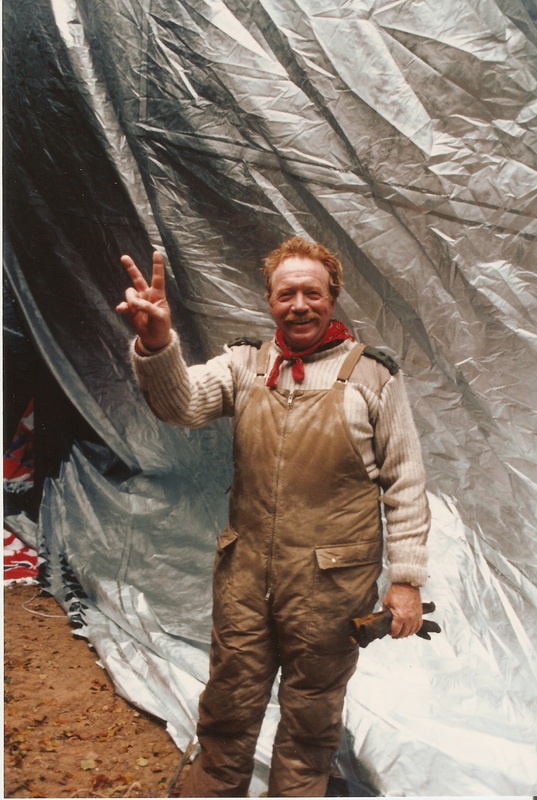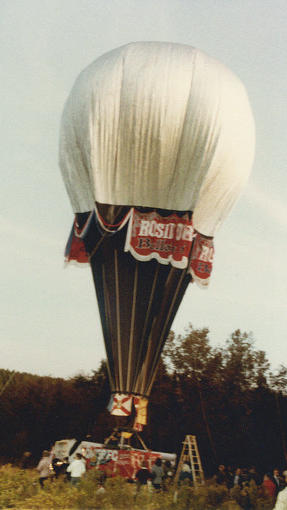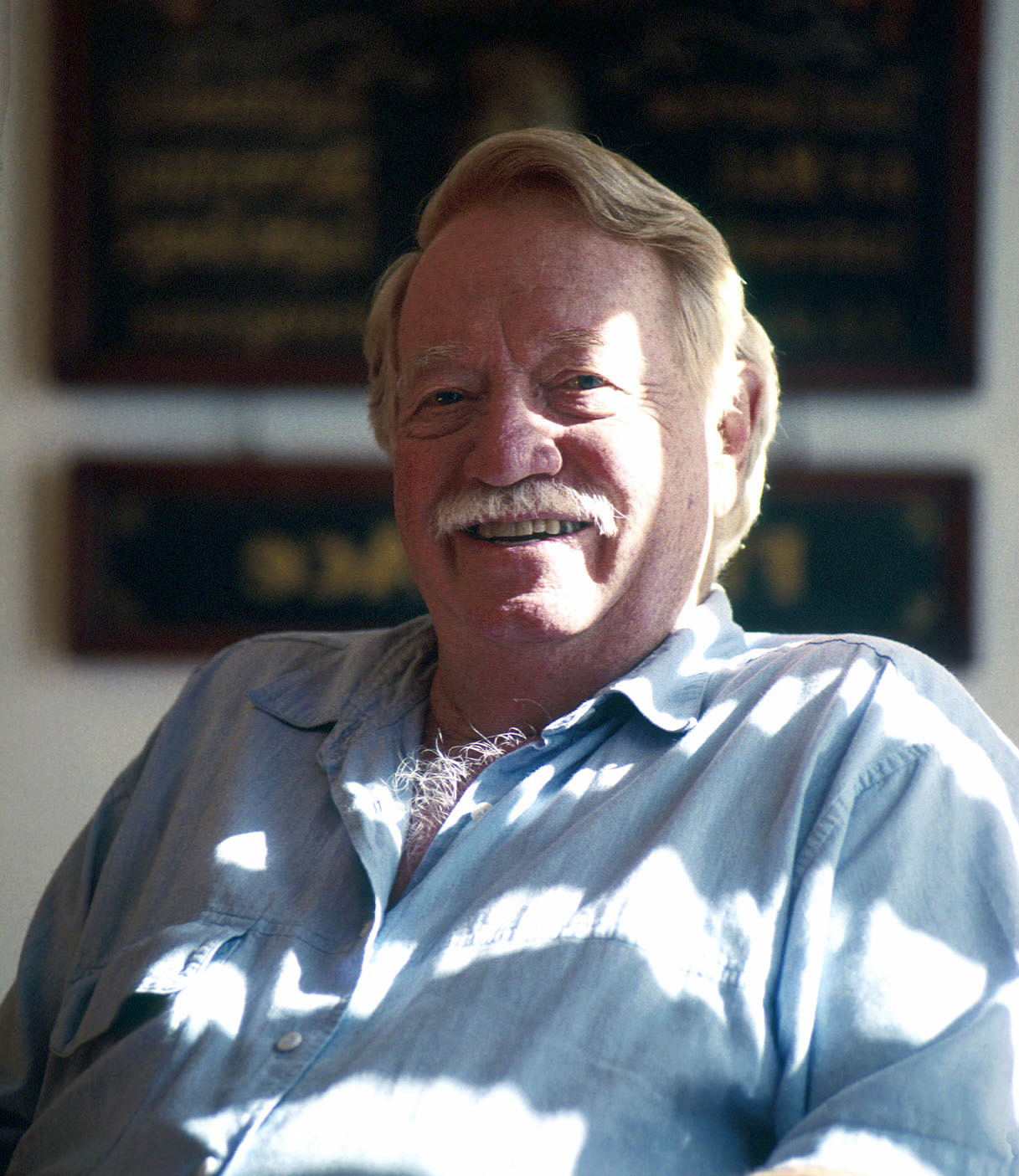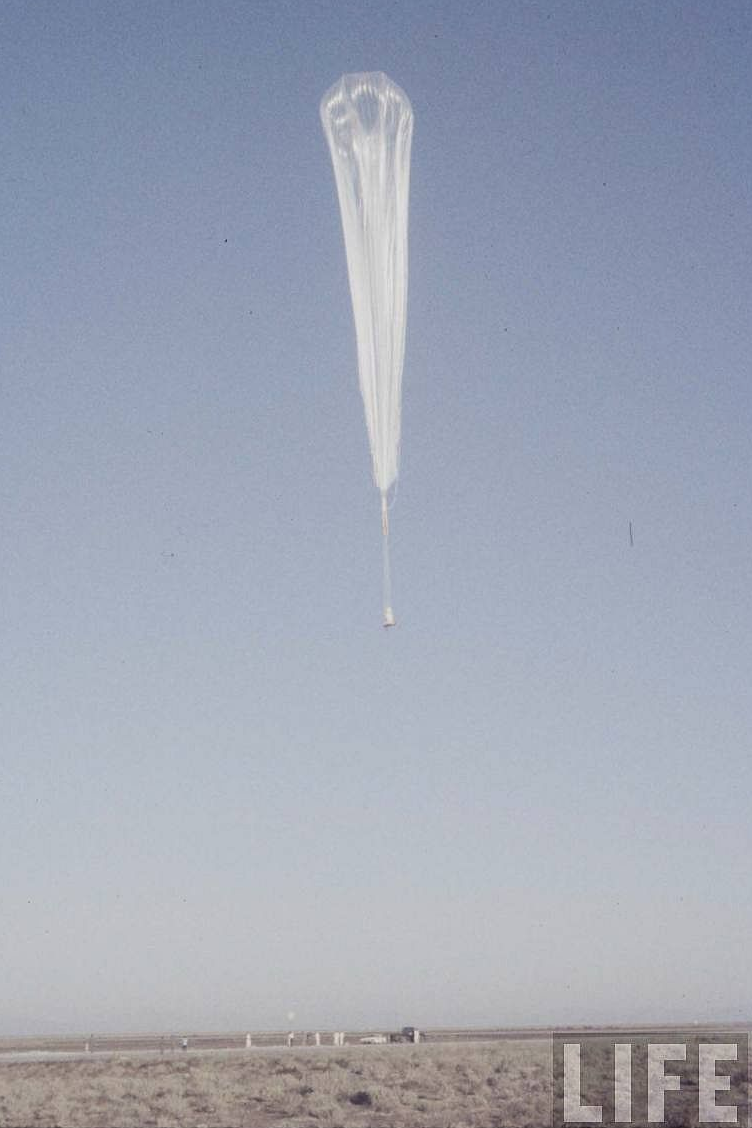
8 October 1958: At Holloman Air Force Base, southeast of Alamogordo, New Mexico, the Project MANHIGH III balloon was launched at 6:51 a.m., Mountain Standard Time (13:51 UTC). The helium balloon lifted a 1,648 pound (748 kilogram) pressurized gondola. Inside was Lieutenant Clifton Moody McClure III, U.S. Air Force.
Over the next three hours, the balloon ascended to an altitude of 99,700 feet (30,389 meters)¹ over the Tularosa Basin.
From this altitude, “Demi” McClure radioed to Dr. David G. Simon, who had flown a previous MANHIGH mission, “I see the most fantastic thing, the sky that you described. It’s blacker than black, but it’s saturated with blue like you said. . . I’m looking at it, but it seems more like I’m feeling it. . . I have the feeling that I should be able to see stars in this darkness, but I can’t find them, either—I have the feeling that this black is so black it has put the stars out.”
The purpose of the MANHIGH flights was to conduct scientific research through the direct observations of the pilot while in contact with ground-based scientists and engineers, and to gather physiological data about the stresses imposed on a human body during extreme high altitude flight.
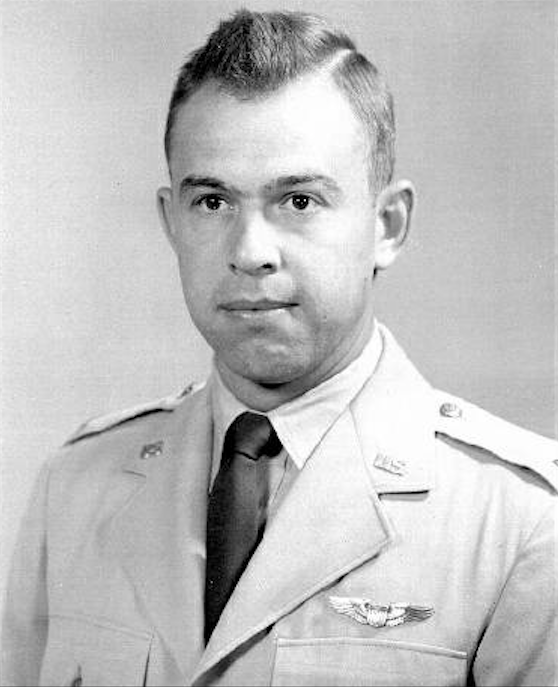
Lieutenant McClure was born at Anderson, South Carolina, 8 November 1932, the son of Clfton M. McClure, Jr., a bookkeeper (who would serve as a U.S. Marine Corps officer during World War II) and Frances Melaney Allen McClure. He attended the Anderson High School, graduating in 1950. He earned a bachelor’s degree in materials engineering and a master’s degree in ceramic engineering from Clemson University. He had been an instructor pilot, flying the Lockheed T-33A Shooting Star jet trainer, at air bases in Texas, but was then assigned to the Solar Furnace Project at Holloman AFB.
Prior high-altitude balloon flights had shown the need for extreme physiological fitness, and McClure was selected through a series of medical and physical evaluations similar to those that would later be used to select astronaut candidates for Project Mercury. He was considered to be physiologically and psychologically the best candidate for MANHIGH flights.
The MANHIGH III balloon was manufactured by Winzen Research, Inc., Minneapolis, Minnesota. It had a capacity of approximately 3,000,000 cubic feet (84,950 cubic meters) and was filled with helium.
The gondola was built of three cast aluminum cylindrical sections with hemispherical caps at each end. It was 9 feet (2.743 meters) high with a diameter of 3 feet (0.914 meters). Inside were cooling and pressurization equipment ,and equipment for various scientific experiments.
Lieutenant McClure wore a modified David Clark Company MC-3A capstan-type partial-pressure suit with an International Latex Corporation MA-2 helmet for protection. He breathed a mixture of 60% oxygen, 20% nitrogen and 20% helium.
During the flight, Lieutenant McClure became dehydrated. Later, temperatures inside the gondola rose to 118 °F. (47.8 °C.). The cooling system was unable to dissipate heat from McClure’s body, and his body core temperature rose to 108.6 °F. (42.6 °C.). After twelve hours, it was decidede to end the flight. MANHIGH III touched down a few miles from its departure point at 2342 UTC, 9 October 1958.
After his participation in Project MANHIGH, Clifton McClure applied to become an astronaut in Project Mercury. He was turned down because his height—6 feet, 1 inch (1.854 meters)— exceeded the limits imposed by the small Mercury space capsule. He was awarded the Distinguished Flying Cross for the MANHIGH III flight. He later flew Lockheed F-104 Starfighters with the South Carolina Air National Guard.
Clifton Moody McClure III died at Huntsville, Alabama, 14 January 2000, at the age of 67 years.
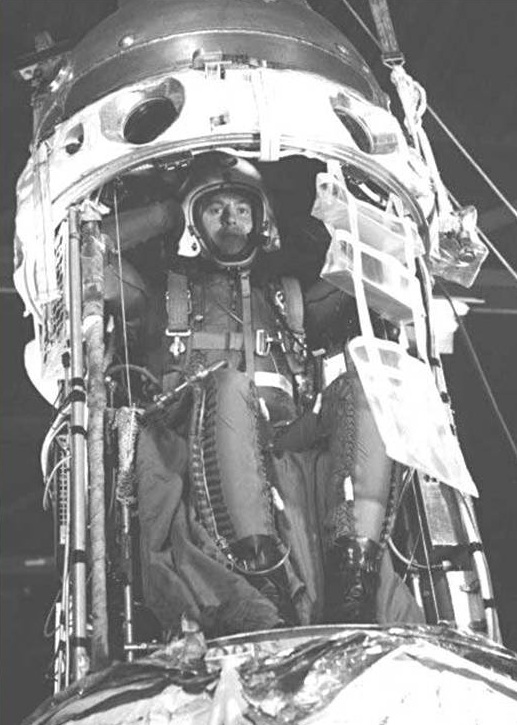
¹ Sources vary. A NASA publication, Dressing For Altitude, cites McClure’s maximum altitude as 98,097 feet (29,900 meters) (Chapter 4, Page 162). The Albuquerque Tribune reported McClure’s altitude as 99,600 feet (30,358 meters), (Vol. 36, No. 163, Saturday, 11 October 1958, Page 7 at Column 6. The National Museum of the United States Air Force states 99,700 feet (30,389 meters). 99,700 feet is also cited in Office of Naval Research Report ACR-64, “Animals and Man in Space,” 1962.
© 2016, Bryan R. Swopes
